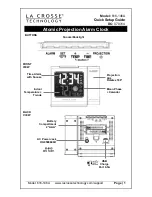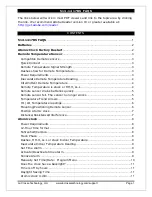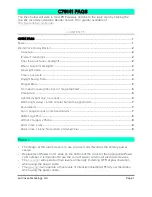
Configuring a Starter Disable using the AU-SOCKET and one SPDT Relay.
Page - 7
Ignition
Switch
Control
Unit
Starter
Solenoid
30
86 87a 85
87
Control
Module
Orange wire
Socket
Orange wire
Starter disable socket's
Red wire to the ignition
switch side of the cut.
Starter disable socket
White wire to the starter
solenoid side of the cut.
Cutting the vehicle's
starter wire will leave
two sides- the "ignition
switch side" and the
"starter solenoid side".
5 Wire Reversal Rest At Ground Systems:
This power doorlock system
differs from the negative and positive pulse systems in the fact that there are no relays or
doorlock control unit. In this type of system, the switches themselves supply the positive
voltage directly to the doorlock actuators, and, more importantly, provide the return ground
path. The correct doorlock interface for this type of system is the optional DLS and 2 relays.
The important thing to remember is the wires in this system rest at ground, which means that
the wires must be "opened", or cut, to make the connections.
Examine the wires on the back of the switch. Normally five wires will be found. Of these
wires, one will be constant 12 volts positive, regardless of the switch's position. Two wires
will be grounded regardless of the switch's position. Of the two remaining wires, one will
show 12 volts positive when the switch is pushed to "lock", and the other will show 12 volts
positive when the switch is pushed to "unlock".
These two wires are both routed to the doorlock actuators and are connected to either end
of the actuator's motor winding. When the switch is pushed to one position, one of these
two wires will have 12 volts. This voltage flows through the wire to the actuator's motor
winding, and since the other wire is still resting at ground an electrical circuit is completed.
When the switch is pushed to the opposite position the electrical flow is reversed. When
the correct wires are found, they must be cut. Notice in the diagram (following page) that
the driver's switch is the primary switch and referred to as the "switch" wires. The wires that
go to the secondary switch are referred to as the "motor" wires. Even though the cut is made
between the switches, the two sides are still correctly called the "switch" and the "motor"
sides, with consideration of "Primary" and "Secondary" switch; please see the diagram.
Page - 30




































